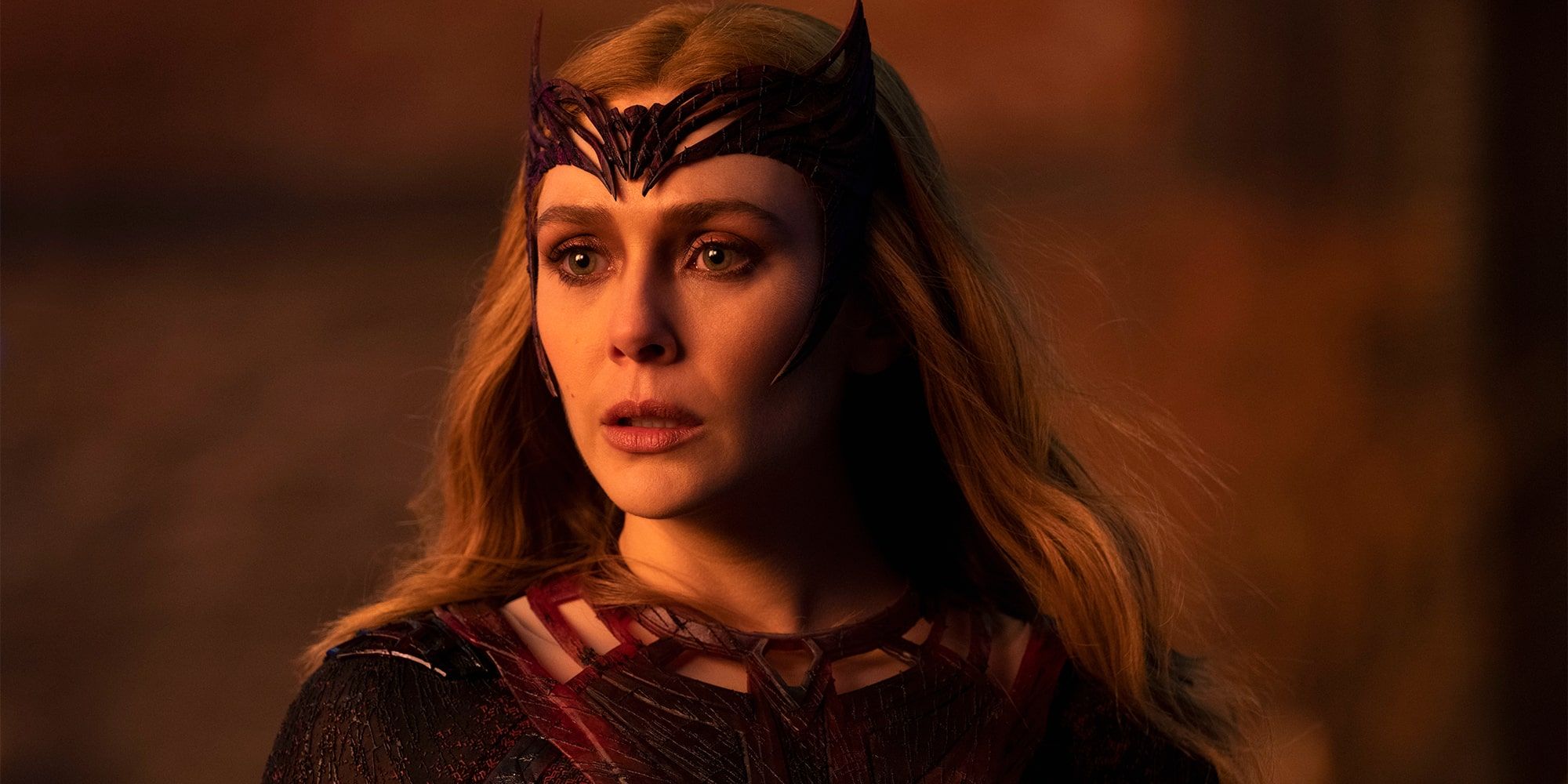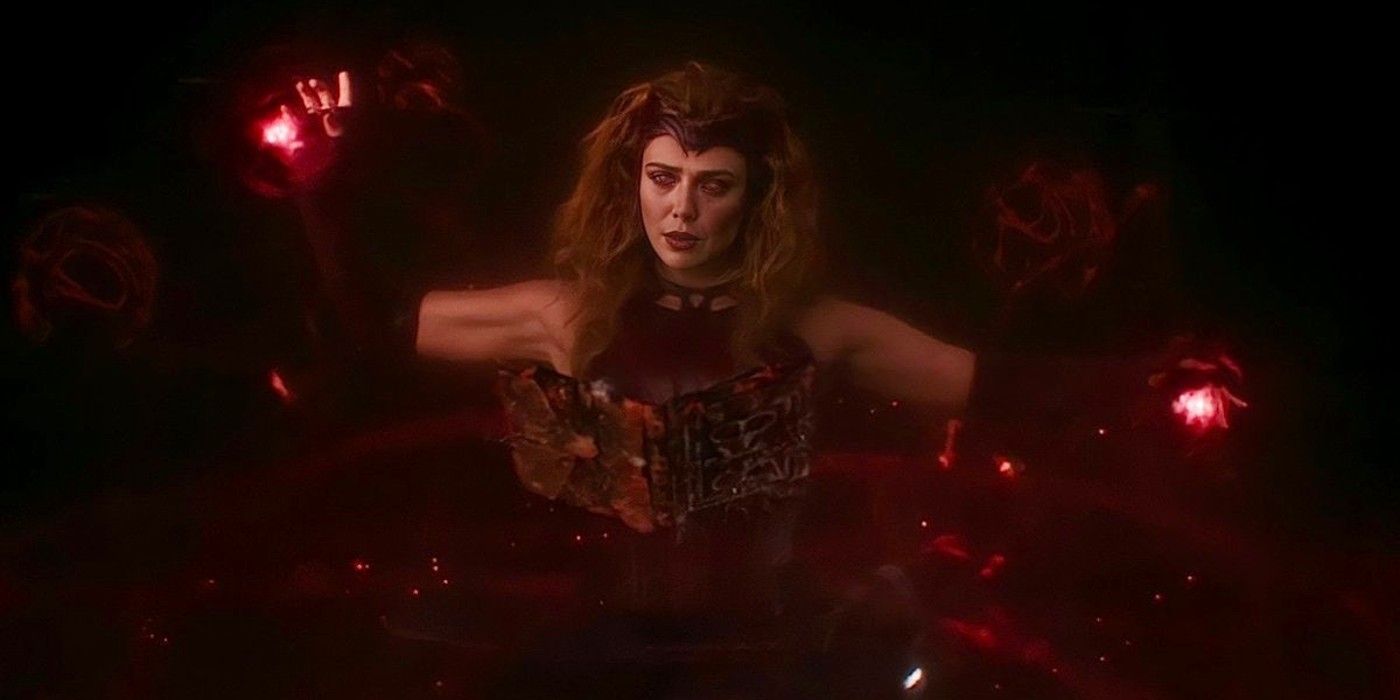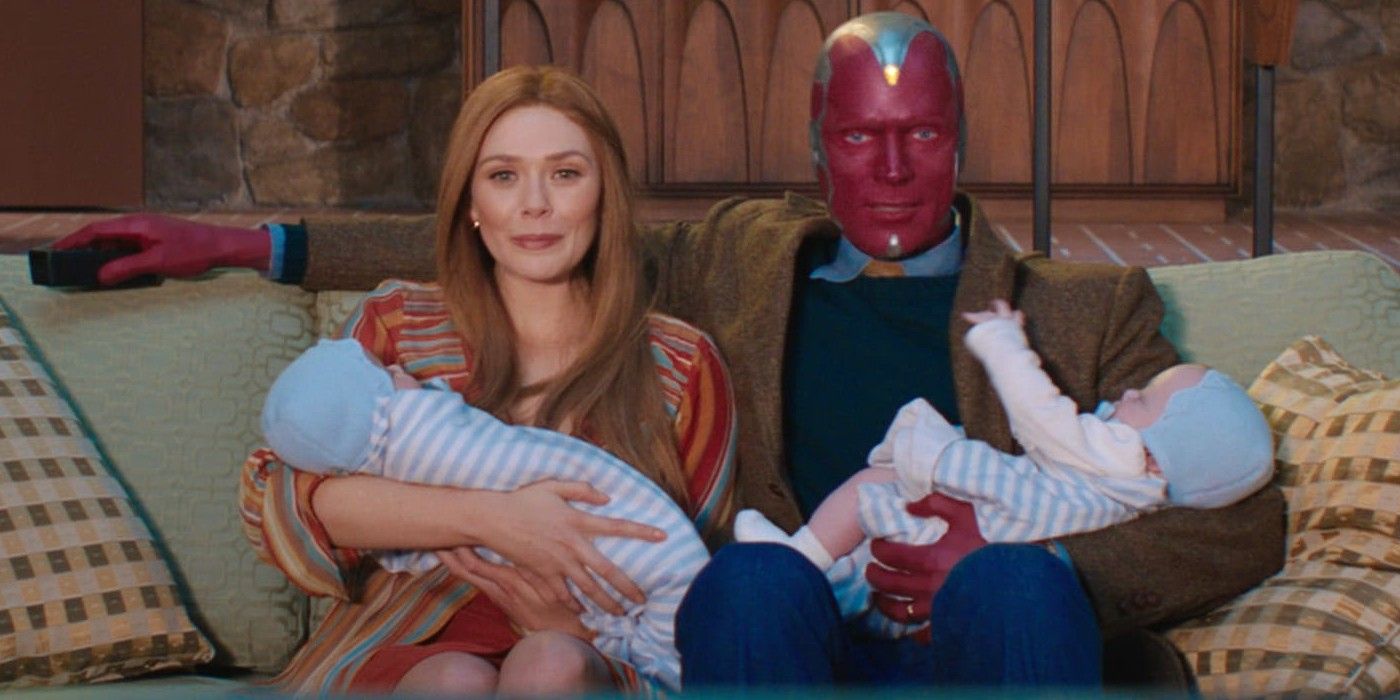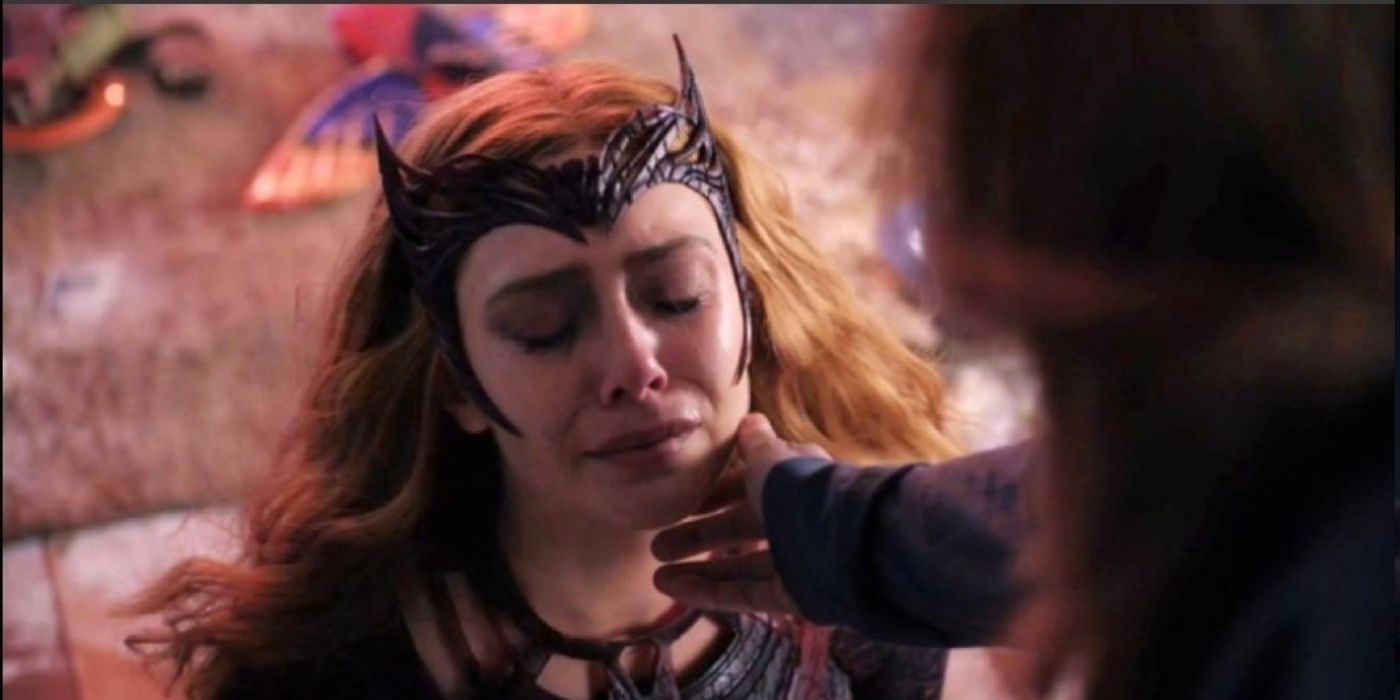When Elizabeth Olsen took the stage at San Diego Comic-Con 2019 with Benedict Cumberbatch during the Marvel Cinematic Universe Phase 4 presentation, fans were delighted that Marvel’s two magic users would unite. However, after both WandaVision and Doctor Strange in the Multiverse of Madness, the TV series and film did not create the combined story that viewers had hoped for. Instead, Wanda’s journey didn’t amount to much of anything.
In WandaVision, fans watched Wanda completely lose control of her powers, creating an imaginary reality in which she processed her grief over losing Vision during Avengers: Infinity War. By Doctor Strange in the Multiverse of Madness, Wanda is now a sinister and legendary figure of lore called the Scarlet Witch. She uses the Darkhold to wreak havoc on the awkwardly introduced multiverse looking for her children. Things get out of hand when she goes on a killing spree to capture a super-powered teenager who can hop between multiverses, because Wanda wants to leave her reality for one where her children are alive.
When it comes to paying off the emotional journey that Wanda underwent in WandaVision, Doctor Strange in the Multiverse of Madness falls woefully short. Wanda is a full-on villain from the start of the film. It’s briefly mentioned a few times that this is the result of the corrupting influence of the Darkhold. In fairness, the post-credits stinger at the end of WandaVision showed her lost in the book of the damned hunting for her children. Yet how she gets to a place where she’s wants to kill Xochitl Gomez’s America Chavez remains a mystery, even after the post-credits scenes in the Doctor Strange sequel.
What makes Wanda’s arc in Multiverse of Madness so disappointing is in the film’s title — it’s the multiverse! There are any number of ways to tell this exact story without destroying the character we got to know in WandaVision. Much like Daenerys Targaryen in Game of Thrones, Wanda’s heel turn is so severe it almost undermines the whole story. Wanda’s journey in Doctor Strange in the Multiverse of Madness is better because of Elizabeth Olsen’s commitment to the character and director Sam Raimi trying to stay faithful to WandaVision, but maybe he should have watched the whole series.
In WandaVision, Wanda’s imagined family convinced her to free the citizens of Westview, who were imprisoned when Wanda lost control of her magic. Wanda made some questionable decisions to keep her family, but she ultimately gave them up because she was still a hero at heart. The villainous Wanda in Doctor Strange 2 could have been Wanda from another universe where she didn’t make this choice and instead, the Avengers stopped her. The “dreamwalking” in the second half of the movie could have been what caused the MCU version of Wanda to break bad in the first place.
The only season of WandaVision took the character through the stages of grief in a beautiful way. Wanda’s reality-altering powers were able to give her a glimpse of the life she missed out on, and her journey took her to a place where she was willing to let that life go. Yes, it was also in the interest of freeing innocent people, but that didn’t make the sacrifice any less profound. Instead of Doctor Strange 2 falling back on the “mad woman” trope so often found in genre fiction, Wanda could have healed — even if only slightly. Wanda delivers this criticism herself in the film. “You break the rules and become a hero,” she says, “I do it and I become the enemy.”
The scene where Wanda and Strange first face off implies she blames Strange for Vision’s death. Vision only insisted Wanda destroy him when Thanos showed up in Wakanda, and Thanos only arrived because Strange gave him the Time Stone. Yet this is never elaborated on in the film. In fact, this is the first conversation Wanda and Strange have on-screen in the MCU. Given how much of Doctor Strange in the Multiverse of Madness focuses on the arrogance and recklessness of the various Doctors Strange, there are countless missed moments where the conflict between these two magic slingers could be expressed through dialogue.
After seeing the terrified faces of one reality’s version of her children, Wanda does stop her onslaught. Overcome with grief yet again, she destroys the Darkhold temple on Mount Wundagore and, presumably, herself. This is another unfortunate decision made by the storytellers. Wanda’s true superpower didn’t have to be her magic, but how she overcame her grief to still be a hero. That character’s story doesn’t end under a pile of rubble — though the red flash as the temple collapsed could also mean she’s not under there at all. That leaves a chance that Marvel Studios will eventually give Wanda Maximoff the proper ending she deserves.
Stream WandaVision on Disney+ and see the next part of the Scarlet Witch’s journey in Doctor Strange in the Multiverse of Madness in theaters.
Read Next
About The Author





